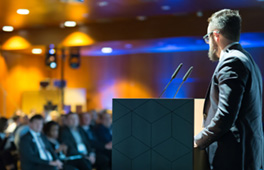
Choose your perfect travel experience
Browse our curated collection of travel destinations worldwide


Discover extraordinary travel experiences and activities

Discover old customs preserved, new cultures being created
Explore the greatest Cultural hotspots around you
Dive into human cultures all over the world with DOOK
![]() Hassle-free booking and best price guaranteed
Hassle-free booking and best price guaranteed
![]() 24/7 support available
24/7 support available
![]() Hand-picked tours & activities
Hand-picked tours & activities
![]() Free travel insurance
Free travel insurance
Rooted deep into TRADITION
One of the reasons people like to travel is not just because of the new
places they wish to see, but also because of the new culture and
lifestyle they come across and experience. The way natives interact with
tourists is probably more important than places to visit because it is
the people who are going to make your stay more exciting. When it comes
to CIS countries, every nation is very welcoming to
tourists in general, with the exception of a section of the locals
trying to rip you off, but that is common knowledge amongst
international tourists.
The culture of Kazakhstan has seen multi-layered developments owing to western influences. Russia and China have also influenced the modern Kazakh lifestyle.
The nomadic past of the Kazakh people often mislead tourists to think
that is how it is now. The way Kazakh people dress has changed too with
the introduction of modern European fashion trends. The modern silk
route is beaming with markets of traditional Kazakh attire.
One of the most unique traits the Kazakh have - they ask about the
health of a man’s livestock before enquiring about his health, otherwise
it is termed as not good etiquettes.
Kyrgyzstan has a diverse culture with the Northern
Kyrgyz people being nomadic and the southern Kyrgyz being more settled
and practice agriculture and livestock rearing. Islam is prevalent in
the south and its influence can be seen in their day-to-day lives. The
film industry in this country is quite small, but active, along with the
music industry which mainly boasts of pop and folk singers, besides
musicians. After gaining independence, many native art forms of
Kyrgyzstan nearly dwindled because of the introduction of modern western
films and influence. The style and fashion in Kyrgyzstan
mean a lot more than probably one can imagine. Famous Kyrgyz designer
Dilbar Ashimbaeva is known for her long bohemian dresses with
traditional central Asian embroidery. Her style of work has been dubbed
as ‘ethno chic”.
The Uzbeks are very lively, as evident from their
colourful dresses. But now they are incorporating contemporary fashion,
along with their traditional attire. Although it would be wrong to
suggest that the traditional attire is losing out to modern styles. Uzbekistan being
a large producer of cotton, has a significant advantage in the world
textile market. Apart from Uzbek cotton, their silk garments are also
quite famous due to their ethnic design and handiwork. The cities are
the only places where people are up to date with contemporary fashion,
with the rest of the country preferring the traditional attire.
Azerbaijan’s economy primarily depends on the oil and
natural gas industry. It was rated as the ‘Top Reformer of the Year,’ in
2008 by World Bank. When it comes to lifestyle and socialising, Baku is
the most popular. The nightlife is something that no
one can ever forget, although there might be some close calls. The
Pacifico can be heard from the seaside. The Pacifico, along with Eleven,
and Opera Sky, are the best nightclubs in the capital. All three
nightclubs are not far from the city centre and has scintillating sea
facing views. Recently, Baku was named as the emerging fashion destination in Azerbaijan by Forbes, after the fifth edition of the Azerbaijan Fashion Week.
Armenia has quite a reputation amongst tourists about
being quite a good place for young adults. This is mainly because the
society is shaped around the idea that everyone should take his or her
own responsibility after 18. So not only is it safe, but also this makes
for a great experience as well. When it comes to modes of
entertainments, Armenia has no shortage. Hiking is quite popular among
people who want to travel around. There are also game zones, pubs,
cinemas, theatres and festivals all the year round. The people are also
quite helpful in general, which is a big advantage for tourists.
Staying in Ukraine costs a lot less than in all the other CIS
countries. Food is relatively very affordable and cheap, which happens
to be one of the main reasons. There is also a big difference in
lifestyle when it comes to the economic classes. Majority of the cities’
populous are businessmen who have an extravagant lifestyle, which is
heavily contrasted by that of the average labourer. People form the
villages are now leaving to cities to look for educational prospective
and jobs. The lifestyle of the cities is the quite opposite. Most of the
urban centres are overflowing with energy. A mix of motivated youth and
young entrepreneurs make for a high-paced life. Ukrainian fashion
is very unique, involving top quality European fabric, which is
designed and manufactured in the country. Bright colours are used to
emphasise the traditional embroidery in everyday attire.
Russia’s lifestyle is completely different from the
rest of the CIS countries. They think of themselves as very well
educated and like to read a lot. Books in Russia are very cheap and one
can buy as many as 10 books a month without putting a strain on the
monthly budget. Theatres are quite popular in the cities since the
Soviet times, when tickets used to be sold from businesses, and schools.
Russia believes in non-individualism. Although over 70 per cent of the
population is Christian, a church wedding is not considered official.
The couple has to register their marriage with the state, before having
their church wedding. Education and healthcare are free in Russia, and a
lot of cultural facilities are available to the
general public. This makes Russia a very cultured country. Their
education system is quite good as well. It offers a mandatory foreign
language course for six years including English, German, Spanish, and
French. More than 40 per cent of the entire population has college
degrees, which is also the highest number achieved by any country.
Russians are also quite up to date with the latest fashion trends, with
their fashion market growing by five per cent, and is currently valued
at 34.1 billion Euros.
Most of the people of Moldova live in villages. As the
country is densely populated, a majority of the population lives on
farms, which happen to be rather small. This is why the rural people
have a closely knit community which is centred around churches. Horses
are more prevalent in these areas as most of the people do not leave
their villages or towns. So they do not require a car, although those
who have cars, go out a bit more. The cities tend to have more Russians
and Ukrainians than Moldavians.
In Belarus, people who are not from cities do not
speak English. This makes communicating with a local bit harder for
tourists. Although when in a city, this is not be too much of a problem.
The people are quite friendly, which is a big help for anyone visiting
Belarus. Most of the people in Belarus speak Russian than Belarusian.
The native language is mainly spoken in the villages, while some
intellectuals try to preserve the language. A lot of people also borrow
words from English to try not to borrow from Russian.
Cultural parallels with India and neighbours build stronger knot
Culturally speaking, there are lots more similarities between India and the CIS countries
than one might think. Not only with India, but also have somewhat
similar cultures and way of thinking with people from the Middle East,
Nepal, Sri Lanka, Vietnam, and China as well. It is quite astonishing
how people living in countries so far apart can have the same way of
life and thinking. In most of the cases, tourists visiting these
countries get quite the shock when they see their hosts having the same
quirks they have, which only helps the two realms to forge a stronger
bond.
In Russia, the nationals are very proud of their past
and fiercely protective of their country. This is quite similar with
Middle Eastern countries, Sri Lanka and Vietnam. When visiting someone’s
place, it can get quite embarrassing as the Russians are aggressive
eaters and offer lots of food and get offended if guests denied
accepting.
Over the centuries, India and Kazakhstan have shared
trade, ethnic and cultural contacts and go way back to migration of the
Aryan tribes. Vedic literature contains fragmental information about the
Indo-Aryan tribes in Kazakhstan. Back in the Neolithic age, the
agricultural cultures of both countries went through similar social
developments and a large part of Central Asia was inhabited by these
tribes. The similarities between Kazakhstan and Vietnam, Sri Lanka and
the Middle East are very few.
Tajikistan too has cordial relations with India. The
popular cuisines of Tajikistan like the kabuli pulao, qubili palao and
samanu are similar to biriyani which is highly rated by every Indian.
When it comes to sports, football is the most popular, compared to
India, where football is a second preference for people. Like India, the
culture and traditions of Uzbekistan are very colorful. The diversity
of culture in Uzbekistan is mainly because of the
absorption of foreign culture and customs from the people of different
countries who settled in Uzbekistan over the years, until their
independence from the USSR. The main contributions came from Chinese,
Russians, Arabs and nomadic Turkish tribes. The Great Silk Road has
played a vital role in shaping the present culture of this country for
many centuries. Exchange of technology, language, traditions and
religion were all possible because of this iconic route.
Cultural similarities between India and Kyrgyzstan go
long way back. Relationship between these two countries has dated back
to the pre-historic period, even though Kyrgyzstan got its independence
in 1991. Besides these similarities, the differences also play a big
role, as the nomadic lifestyle is very appealing to Indians.
Turkmenistan had their own set of traditions and
culture, but it was largely affected by powerful neighbouring states
like Russia. The Indian Prime Minister Narendra Modi visited
Turkmenistan in 2015 to cement the bilateral ties, which was dubbed a
historic visit as it was after 20 years an Indian Prime Minister had
visited the country.
Of the CIS countries, no other country shares as much history with India as Armenia.
The guns that were used by the Mughals against the Marathas were made
by Armenians. There was also a doctor in the court of Akbar the Great,
who was of Armenian descent, along with a notable Hindi and Urdu scholar
Mirza Zulqarnain, who was also an Armenian. The Scindia royal family of
Gwalior also employed an Armenian as Commander-in-Chief of their army.
Ukraine shares a lot of their culture with their
neighbouring states and has Slavic roots and mythology. The Soviet era
integrated many cultures of the Central Asia and many other nations with
a common language, after declaring their independence from the USSR.
Ukraine participates in the World Culture Festival which is annually
held in India, which has cemented ties between the two countries.
Belarus is home to a diverse set of religions like
Jews, Muslims, Orthodox Christians, Greek and Roman Orthodox Christians.
The traditions and culture of this country is very diverse, just as
similar to India.
Like Belarus, Moldova does not have too many similarities with India to boast about but their culture and hospitality is not to be questioned.
Azerbaijan’s culture is hugely influenced by Iranian,
Turkish, Russian and Caucasian heritage. The influence of Russia is very
less compared to the others and is only because the country was part of
the USSR.
Bulgaria, Serbia and Georgia are the countries which welcome tourists with open arms. Bulgarians have a lot of respect for Indians.
Bollywood films are popular in most CIS countries especially during
USSR era. This gives every Indian tourist something to talk about and
possibly boast of!
Testimonials
"Our trip with Dook International was just fantastic. We learnt about Vietnam history and culture. We have also tried delicious food of Vietnam and indulge in different adventures…”
Dr.Ramesh Keval chand

Ready to venture out into the world? Fill the form below and start your brand new journey with us

